Conventional Scanning Electron Microscopes (SEMs) are often characterized by their bulkiness, high cost and complexity, making them challenging to operate for individuals who are not extensively trained.
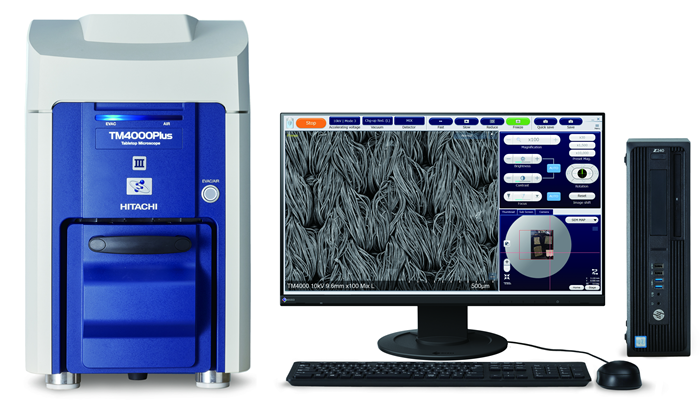
Image Credit: Hitachi High-Tech Europe
Despite their capabilities, these instruments frequently deliver image resolutions that exceed the requirements of typical analytical tasks.
In recent years, compact Tabletop SEMs have emerged as robust and versatile tools. They offer sufficient image resolution for a variety of applications while ensuring exceptional ease of use and significantly lower costs compared to traditional full-sized SEMs.
This article will examine the advantages of Tabletop SEMs and provide an overview of the features of the TM4000 Series, Hitachi’s latest generation of compact, versatile, and user-friendly Tabletop SEMs.
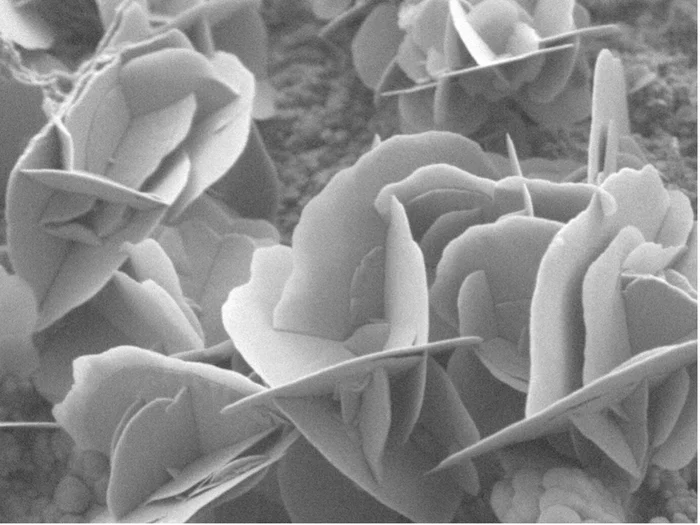
Copper sulfide crystals. 5 kV, SE signal. Image Credit: Hitachi High-Tech Europe
Exploring Tabletop SEMs
Tabletop SEMs are a logical progression from optical stereo microscopy, addressing the limitations of image resolution and depth of focus inherent to this well-established technology.
These instruments offer additional imaging capabilities, such as material composition differentiation, and, when equipped with X-ray element analysis functionality, provide clear insights into the elemental (chemical) composition of a sample.
In optical stereo microscopy, specimen imaging requires no special preparation; the sample is positioned beneath the lens, the illumination source is activated, the focus is adjusted, and the image is saved.
A well-designed Tabletop SEM should adhere to this operational model: any sample can be loaded, the electron beam is activated using optimized, predefined observation settings and sophisticated algorithms instantly enhance image contrast and focus.
The user merely needs to center the area of interest in the image and set the desired magnification. In summary, SEM technology is now accessible to all users.
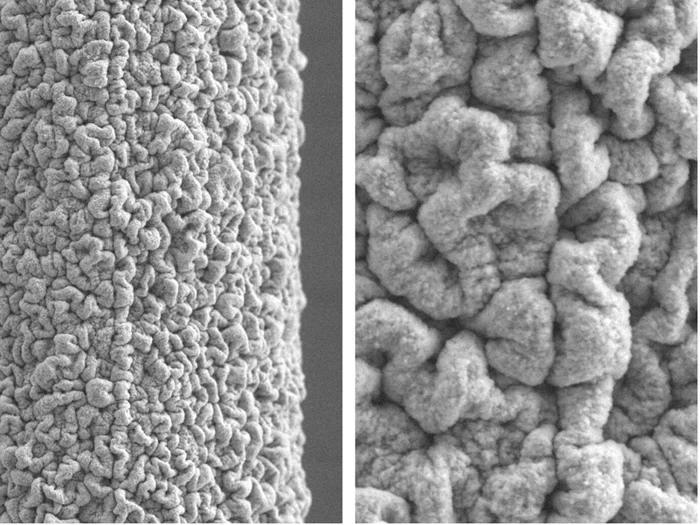
Corroded copper wire. 10 kV, SE signal. Image Credit: Hitachi High-Tech Europe
TM4000 Series Tabletop Microscopes
Hitachi pioneered the commercial Tabletop SEM in 2005, enabling operators to effortlessly and rapidly produce high-quality electron microscopy images. This technology has been swiftly adopted across various industries and academic fields, including life sciences, materials science, and quality control.
The TM4000 Series represents the latest advancement in Hitachi’s Tabletop SEMs. It offers enhanced capabilities while maintaining the core principles of ease of use and rapid data acquisition without compromising flexibility.
Hitachi’s new generation of Tabletop SEMs empowers users to gain insights into their samples and resolve issues swiftly and conveniently, eliminating the need for investment in expensive conventional full-sized SEMs.
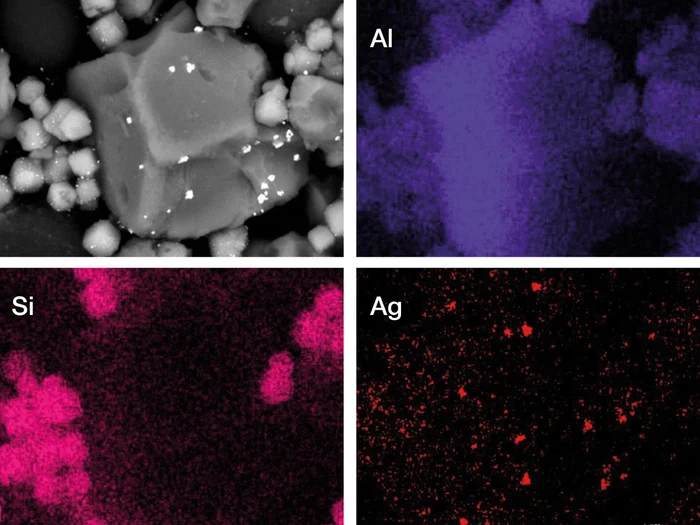
Cosmetic powder, EDX analysis. 15 kV. Image Credit: Hitachi High-Tech Europe
Key Features and Benefits of the TM4000 Series
The TM4000 Series encompasses a range of advanced features that deliver impressive image quality while remaining user-friendly and suitable for multiple applications. High-resolution images can be obtained with just a few simple steps.
No sample preparation is required, even for non-conductive samples, allowing for observation under low vacuum conditions. The Variable Pressure mode minimizes image charging artifacts caused by incident electrons, and the charge-up reduction mode enables users to diminish surface charge on a sample with a single click.
Secondary Electron (SE) and Backscatter Electron (BSE) signals can be acquired and recorded simultaneously in low-vacuum mode. Operators can select from various Probe Currents (Ip) and Acceleration Voltages (kV) to optimize imaging results.
With the TM4000Plus, the SE signal provides topographic information, while the BSE signal offers material compositional contrast. The capability to blend both SE and BSE signals allows users to obtain a comprehensive image that combines topographical and material contrast.
The TM4000Plus can be configured with a wide array of accessories, including Energy Dispersive Spectroscopy (EDS Analysis) from leading analytical companies such as Oxford Instruments and Bruker Nano, which facilitates rapid and precise elemental analysis.
An optical image of the sample is automatically captured upon loading, which can be employed for sample navigation. When EM images are recorded, a thumbnail image is saved and overlaid on the optical navigation image (SEM MAP function), providing a navigation history of the sample. The system accommodates samples up to 80mm in diameter and 50mm in thickness, surpassing the capabilities of previous-generation tabletop SEMs.
Optional software features enhance the understanding of surfaces and samples, including:
- 3D surface reconstruction and surface metrology
- Multi-ZigZag and Stitch functions for automatic image acquisition across large samples
- Particle analysis
- Fiber metrics
A comprehensive set of commands enables automation through Python scripting for specialized requirements.
At its core, the TM4000 Series emphasizes ease of use and versatility. It provides even the most budget-conscious companies or academic institutions with the imaging and analysis capabilities necessary to fully characterize specimens without resorting to expensive full-scale SEMs.
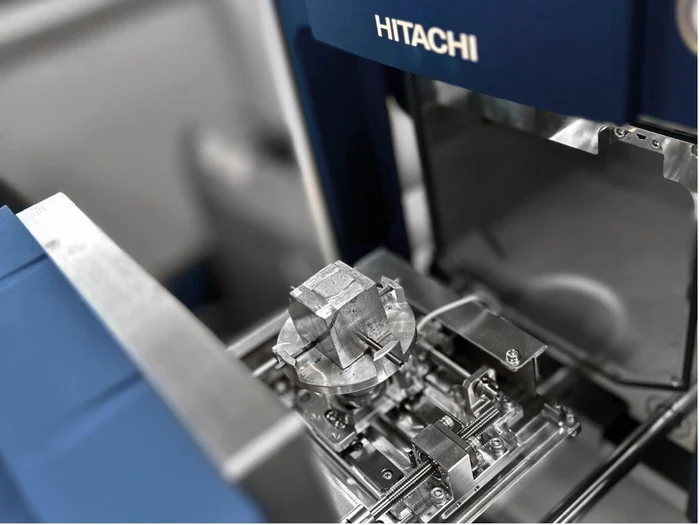
The sample stage is pulled completely from the chamber for easy sample changes. Image Credit: Hitachi High-Tech Europe
Conclusions
Tabletop SEMs, such as the TM4000 Series, are expanding the capabilities and applications of Scanning Electron Microscopy in both industrial and academic settings.
They offer a user-friendly, versatile tool that can, in many cases, provide unparalleled, in-depth insights into samples at a fraction of the cost of conventional full-size SEMs.
For users seeking enhanced imaging power, the ultra-compact Hitachi FlexSEM1000 is an excellent option for any organization.
As Patrick Marks from Hitachi High-Tech Europe states, “The TM4000Plus is the most versatile and flexible instrument available, covering an incredible range of applications for both academia and industry, from biomaterials and polymers to electronics, materials, and metallurgy.”

This information has been sourced, reviewed and adapted from materials provided by Hitachi High-Tech Europe.
For more information on this source, please visit Hitachi High-Tech Europe.